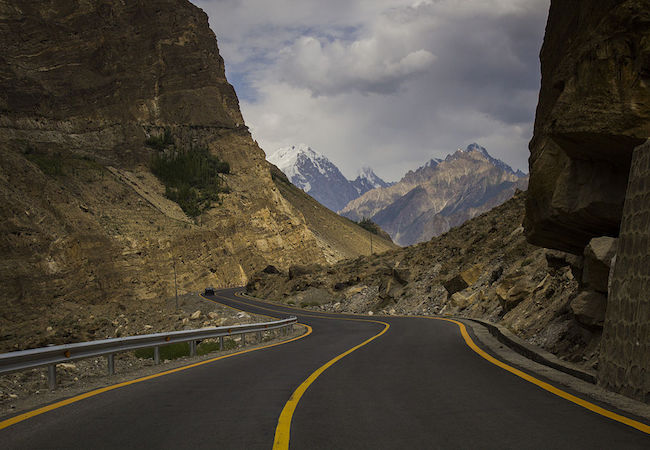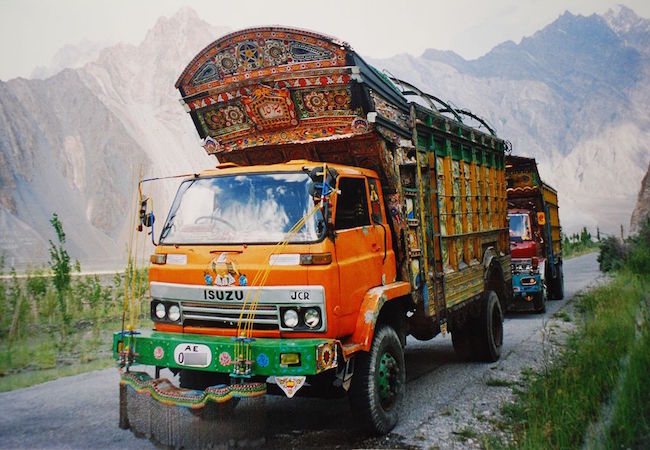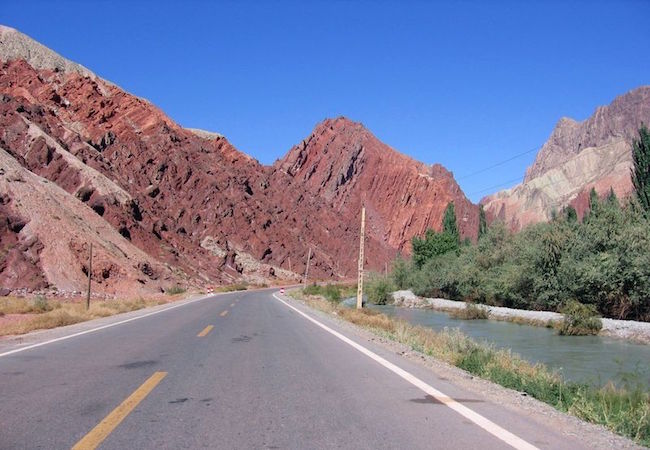
By Sourajit Aiyer
China recently announced big-ticket investments in Pakistan (in power, economic corridor and infrastructure) after a serious drought of foreign investments into Pakistan. However, economic relations, of any country, are largely based on own-interests. China’s interest in Pakistan may be an opportunity to lend its surplus capital and export input products. It is up to Pakistan to ensure its people get a fair deal. There are few reasons why realizing the China-Pakistan partnership may be more complicated in reality. Pakistan and China are in different stages of economic evolution and have different priorities. Pakistan needs to ensure that its main priority, i.e. improvement in its peoples’ standard of living and job opportunities, gets realized “on-ground” and not merely in “announcements”.
Power Projects
Pakistan’s real challenge in its energy-crisis has been its circular debt, ahead of capacity shortfall. Pakistan largely has electricity generation capacity in line with its demand, at ~20-22,000 MW. However, it produces only half of this capacity since its circular debt often impacts the smooth flow of production. Estimates suggest the government pays electricity companies ~Rs 15/KWH while it charges people ~Rs 10/KWH. However, it receives only ~Rs 4.5/KWH due to rampant evasion. The shortfall of ~Rs 10.5/KWH leads to delayed payments to electricity companies, which then leads to delayed payments for fuel supplies, which then circles back to impact the flow of production. The government cannot increase tariff beyond a point since it is a sensitive issue with voters. The ruling party (PML-N) has a large voter base in Punjab province, which is also the largest consumer of electricity. Forcing defaulters to pay has constraints, since the main defaulters are often companies owned by the elite, many of whom have significant presence in its politics. Capacity-addition is not the primary answer to answer Pakistan’s energy crisis. The real fear for any power project in Pakistan remains payment delays/suspension, unless the Pakistani government can close the gap between what it earns and what is pays.
What are these Chinese power projects costing ordinary Pakistanis?
China may have received “guarantees” for the new projects that their dues would be paid, since it would have the same fears. Guarantee clauses may not be publicly announced in the media, hence it is tough to corroborate. Meeting such guarantee payments would put pressure on Pakistan to raise new funds – the question is how? Increasing the tax rate to boost earnings would impact ordinary Pakistanis, who already face a lack of adequate job opportunities due to the paucity of employment-generating investment projects. Widening the tax net by reducing evasion is a better solution, but it has its own long-term challenges. Borrowing has its limitations on an economy already on a sticky wicket fiscally. Pakistan had a sizable debt of ~US$66 billion as of FY2014 and its debt servicing per quarter is ~ US$1.5 billion (~US$4-6 billion annually). It plans to issue another US$1 billion in Eurobonds next year to boost reserves, which along with the maturity of its 10-Year FY2006/07 Eurobonds, would increase the pressure on debt servicing. While its previous World Bank borrowings might have been at concessional rates, the Eurobonds are not really concessional. In other words, it may comprise a small portion of its outstanding debt pie today, but will comprise a larger share of its debt servicing pie in the years to come, adding a double whammy. As it is, a large portion of its new debt is really to repay old debt, which does not enhance its debt repayment capacity as it is not used to generate economic activities.
Moreover, like the IMF, new lenders may also demand controls on deficit which may impact its ability to spend on employment-generating public expenditure projects, impacting ordinary citizens directly. Pakistan may raise funds by privatizing the government-owned companies. But the challenge is to find buyers for failing companies. An IPO to privatize a government company may garner media mileage. But if that company was actually one of the better performing ones, then the long-term impact on the exchequer of losing a national asset is anyone’s guess. Some thermal projects announced are on imported coal, and so Pakistan will not benefit from the reducing prices of crude oil. The high price of imported coal would eat its finances further. A couple of projects would also require building plants in the Thar desert as they would run on Thar lignite, which means incurring the cost of transporting water to the desert. The existing power projects in financial trouble may sink even deeper since there may be lesser elbow-room to keep their cash cycle running, which may impact the overall electricity generated. In short, the crisis may become worse before it gets any better.
It is not the first time China promised power projects. In the past, projects in Punjab and Balochistan were abandoned by the Chinese due to feasibility concerns. The 6,600 MW projects abandoned in Punjab were ~US$16 billion, about half of the ~US$33 billion projects announced now. So this outlay may not be that big for China to possibly abandon again in the future, if feasibility concerns arise again.

China-Pakistan Economic Corridor
Pakistan may publicize CPEC as a game-changer, with over 50 agreements signed during President Xi’s visit. It may showcase dazzling visions of an extensive network of train-lines, highways and oil pipelines running from Gwadar Port to the Karakoram Highway. However, China had already indicated some years ago that it would be prohibitively expensive to transfer oil and gas over the Karakoram into the restive Xinjiang province, which is anyway far from China’s industrial centers. Hence, it invested in a port project in Myanmar’s Kyaukphyu. That would be an easier terrain to transfer oil and gas, and it would also be much closer to its industrial centers in its south-west provinces. This project includes oil-storage facilities near Kyaukphyu as well as refining facilities in Yunnan and Sichuan, indicating the long-term intent of the project. China’s “String-of-Pearls” strategy in the Indian Ocean, which involves military presence and infrastructure projects in the region, also indicates its intent to protect its strategic interests in the region – and oil transfer via Myanmar is a definite strategic interest for the world’s largest “manufacturer” nation.
What is the Economic Corridor costing ordinary Pakistanis?
The deal for Pakistan is – by when will the entire CPEC investments flow? China may continue to keep its commitment to CPEC alive due to strategic interests of retaining Pakistan as a military ally against India, but the real question for Pakistanis is by when this entire commitment would materialize and whether it realizes the economic goals within a realistic time? If the investment flows are delayed because Gwadar now has lower priority for China in comparison to Kyaukphyu, then the realizations of the CPEC’s economic goals would only get delayed, making the Pakistani people disgruntled.

Infrastructure
These include the proposed MRT Metro system for Lahore and railway-track modernization between Karachi and Peshawar. A MRT Metro system might have been more needed in Karachi since it is a significantly larger and dispersed city than Lahore. Nevertheless, the MRT would definitely help urban transportation in Lahore, the base of the current Pakistani Prime Minister’s brother, Shahbaz Sharif’s provincial Punjab government. The railway-track modernization would also greatly help connectivity with the Afghanistan border, connecting that frontier region better with Karachi port and the major provinces of Punjab and Sindh.
What are the infrastructure projects costing ordinary Pakistanis?
Balancing the project costs with a tariff that is affordable for the target commuters/freighters is the challenge when it comes to transportation projects, if India’s experience gives any indication. This means finding the optimal tariff which does not pinch the pockets of the users, does not translate into increase in freight rates and hence the cost of food supplies, and yet keeps the project itself feasible. Urban transport like MRT Metro has a social angle as well. The rich, elite may consider it socially demeaning to travel by public transport – though they can afford it; and the lower middle class/poor people who want to travel in it – may not be able to afford it. High tariff for the user may deter him from using the transport, or make him net poorer if he does use it. This situation does not augur well for the project, leading to cash flows issues if the project costs are to be recovered within a BOT period. If the project costs are payable upfront itself, it leads to funding challenges which goes back to the discussion made in the Power projects section. The dilemma about recovering project costs through increased tariff holds true for railway modernization too. Moreover, railway freight hikes may drive inflation, if the increased tariff is passed on to the consumers by hiking the cost of goods supplied. Higher inflation, apart from high tariffs, would have a snowballing impact on the ordinary Pakistani.
Conclusion
It needs to be seen how much, and by when, all the mega investments announced actually materialize, if the projects run profitably and if they realize the economic goals within a realistic timeline. The question for ordinary Pakistanis is – by how much is their government increasing its indebtness to accommodate this. An average fiscal deficit of 5-6% and a GDP growth rate of ~3-4% reduces the ability of the economy to meet this debt servicing in entirety through economic income alone, without raising new debt to repay old debt. Supply of new credit may be available to Pakistan via multilateral agencies and bilateral relations, but one wonders how many generations of Pakistanis it will take to repay all this debt without a commensurately equal uptick in economic income!




